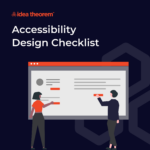Development & Engineering
Driving AI Success: Rapid Wins That Empower Developer Teams
01 OCT 2025
7 mins read


Integrating artificial intelligence into your development workflow can feel like a monumental task. The complexity of machine learning models, the need for vast datasets, and the specialized skills required can make AI projects seem slow and resource-intensive.
However, the path to AI success doesn’t have to be a long, difficult climb. By focusing on rapid, strategic wins, developer teams can build momentum, demonstrate value, and empower themselves to tackle bigger challenges.
This article explores practical strategies for achieving quick AI victories. We will show you how to leverage existing tools, focus on high-impact projects, and foster a culture of collaboration. By embracing an iterative approach, your team can start delivering tangible results quickly and accelerate its journey toward AI mastery.
Leverage Pre-Trained Models for a Head Start
Building a machine learning model from scratch is a significant undertaking. It requires deep expertise, massive amounts of labeled data, and considerable computing power. For many developer teams, this is a major barrier to entry. Fortunately, you don’t always have to reinvent the wheel. Leveraging pre-trained models is one of the fastest ways to integrate sophisticated AI capabilities into your applications.
What are Pre-Trained Models?
Pre-trained models are AI systems that have already been trained on large, general datasets by tech giants like Google, OpenAI, and Meta. These models, such as GPT for text generation or YOLO for object detection, have already learned complex patterns and features. You can adapt them for specific tasks using a process called transfer learning, which requires far less data and time than training from the ground up.
Finding the Right Model
Countless pre-trained models are available through platforms like Hugging Face, TensorFlow Hub, and PyTorch Hub. You can find models for a wide range of tasks:
- Natural Language Processing (NLP): Sentiment analysis, text summarization, translation, and chatbot responses.
- Computer Vision: Image classification, object detection, and facial recognition.
- Audio Processing: Speech-to-text transcription and audio classification.
By starting with a powerful, pre-trained foundation, your team can bypass months of development work and move directly to fine-tuning and implementation.
Focus on High-Impact, Low-Effort Use Cases
The key to building momentum is to deliver value early and often. Instead of targeting a complex, company-wide AI transformation from day one, identify small-scale problems where AI can make a significant, visible impact with minimal effort. This approach helps secure buy-in from stakeholders and builds your team’s confidence.
Identifying Quick Wins
To find the best starting points, look for tasks that are repetitive, rule-based, and time-consuming for humans. Ask your team and other departments: “What manual process, if automated, would save you an hour every day?”
Potential high-impact use cases include:
- Automating customer support triage: Use a sentiment analysis model to classify incoming support tickets as “Urgent,” “Standard,” or “Low Priority,” helping agents focus on the most critical issues first.
- Intelligent log analysis: Develop a simple anomaly detection model to automatically flag unusual patterns in application logs, reducing the time developers spend searching for errors.
- Automated content tagging: Use an NLP model to scan articles or product descriptions and suggest relevant tags, improving searchability and organization.
These projects are self-contained, have clear success metrics, and provide immediate benefits. Each successful implementation becomes a powerful case study that justifies further investment in AI.
Foster Collaboration Between Developers and Data Scientists
A common roadblock in AI projects is the silo between software developers and data scientists. Data scientists create models, but developers are the ones who must integrate them into live applications. When these teams don’t communicate effectively, projects stall due to technical incompatibilities, deployment challenges, and mismatched expectations.
Building a Collaborative Bridge
True empowerment comes from cross-functional collaboration. Encourage developers and data scientists to work together from the very beginning of a project.
Here’s how to make it happen:
- Establish a Shared Language: Ensure everyone understands the project goals, technical constraints, and key performance indicators (KPIs). Developers should learn basic ML concepts, while data scientists should understand software development lifecycles and deployment environments.
- Integrate Workflows: Use tools and platforms that support both data science experimentation and software engineering best practices. Platforms like MLflow or Kubeflow help manage the end-to-end machine learning lifecycle, from model training to deployment and monitoring.
- Pair Programming Sessions: Have developers and data scientists code together. A developer can help a data scientist containerize a model with Docker, while a data scientist can explain the model’s inputs and outputs to a developer.
This collaboration ensures that models are built not just for accuracy, but also for scalability, maintainability, and seamless integration.
Embrace Iterative Development and Clear Goals
AI projects are inherently experimental. You won’t get everything right on the first try. Adopting an agile, iterative development process allows your team to learn, adapt, and improve continuously without getting bogged down by the pursuit of perfection.
Set SMART Goals
Instead of a vague goal like “improve efficiency with AI,” set specific, measurable, achievable, relevant, and time-bound (SMART) goals. For example: “Reduce the manual effort of tagging support tickets by 50% within the next quarter by implementing an automated NLP classification model.” Clear goals provide a target for your team and make it easy to measure success.
Start Small and Iterate
Begin with a minimum viable product (MVP) for your AI feature. The first version of your model doesn’t need to be perfect; it just needs to work and provide some value. Deploy it to a small group of users, gather feedback, and monitor its performance. Use these insights to guide your next iteration. This cycle of building, measuring, and learning reduces risk and ensures that you are creating a solution that truly meets user needs.
Utilize Accessible AI Tools and Platforms
The AI ecosystem is rich with tools and platforms designed to lower the barrier to entry. Your team doesn’t need to be composed entirely of PhDs in machine learning to get started. Empowering your developers means giving them tools that abstract away the complexity of AI.
AutoML and Low-Code Platforms
Automated Machine Learning (AutoML) platforms like Google Cloud AutoML, Azure Machine Learning, and H2O.ai enable developers with limited data science experience to train high-quality custom models. These tools automate time-consuming tasks like feature engineering and hyperparameter tuning, allowing your team to focus on the application logic.
MLOps Tools for Smooth Deployment
Getting a model into production is often harder than building it. MLOps (Machine Learning Operations) tools are designed to streamline the deployment, monitoring, and management of machine learning models. Tools like Docker for containerization, Kubernetes for orchestration, and Prometheus for monitoring are essential for building robust, scalable AI applications.
By equipping your team with the right tools, you enable them to experiment, deploy, and manage AI features with greater autonomy and speed.
Conclusion: Your Path to Accelerated AI Success
Driving AI success is not about launching a single, perfect, all-encompassing solution. It’s about building a flywheel of small, rapid wins that create momentum and empower your developer team. Each successful project builds confidence, demonstrates value, and unlocks new possibilities.
Here are your actionable takeaways:
- Start with Pre-Trained Models: Don’t build from scratch. Leverage the work of others to deliver advanced AI features quickly.
- Target High-Impact Use Cases: Solve a small but painful problem first. Quick, visible wins are your best tool for gaining support.
- Unite Your Teams: Break down silos between data scientists and developers to ensure models are built for the real world.
- Iterate Relentlessly: Embrace an agile mindset. Start with an MVP, gather feedback, and continuously improve.
- Equip Your Team for Success: Provide developers with accessible AI and MLOps tools that simplify the development and deployment process.
By following these strategies, your team can move from AI curiosity to AI capability, delivering real business value one rapid win at a time.





